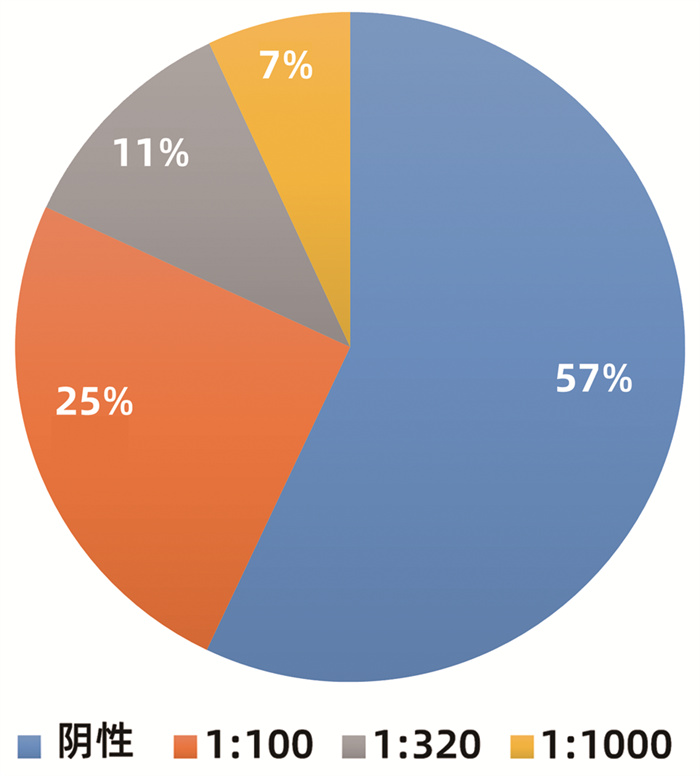| [1] |
SHEN T, LIU Y, SHANG J, et al. Incidence and etiology of drug-induced liver injury in mainland China[J]. Gastroenterology, 2019, 156(8): 2230-2241. e11. DOI: 10.1053/j.gastro.2019.02.002. |
| [2] |
ANDRADE RJ, CHALASANI N, BJÖRNSSON ES, et al. Drug-induced liver injury[J]. Nat Rev Dis Primers, 2019, 5(1): 58. DOI: 10.1038/s41572-019-0105-0. |
| [3] |
KE L, LU C, SHEN R, et al. Knowledge mapping of drug-induced liver injury: A scientometric investigation (2010—2019)[J]. Front Pharmacol, 2020, 11: 842. DOI: 10.3389/fphar.2020.00842. |
| [4] |
YU YC, MAO YM, CHEN CW, et al. CSH guidelines for the diagnosis and treatment of drug-induced liver injury[J]. Hepatol Int, 2017, 11(3): 221-241. DOI: 10.1007/s12072-017-9793-2. |
| [5] |
CHALASANI N, FONTANA RJ, BONKOVSKY HL, et al. Causes, clinical features, and outcomes from a prospective study of drug-induced liver injury in the United States[J]. Gastroenterology, 2008, 135(6): 1924-1934, 1934. e1-4. DOI: 10.1053/j.gastro.2008.09.011. |
| [6] |
FONTANA RJ. Pathogenesis of idiosyncratic drug-induced liver injury and clinical perspectives[J]. Gastroenterology, 2014, 146(4): 914-928. DOI: 10.1053/j.gastro.2013.12.032. |
| [7] |
|
| [8] |
|
| [9] |
CHEN QQ, LU HH, SUN FF, et al. Analysis on chronic factors of patients with drug-induced liver injury[J/CD]. Chin J Liver Dis(Electronic Version), 2020, 12(1): 68-75. DOI: 10.3969/j.issn.1674-7380.2020.01.012. |
| [10] |
HASSAN A, FONTANA RJ. The diagnosis and management of idiosyncratic drug-induced liver injury[J]. Liver Int, 2019, 39(1): 31-41. DOI: 10.1111/liv.13931. |
| [11] |
MADDUKURI VC, BONKOVSKY HL. Herbal and dietary supplement hepatotoxicity[J]. Clin Liver Dis (Hoboken), 2014, 4(1): 1-3. DOI: 10.1002/cld.364. |
| [12] |
CHOW HC, SO TH, CHOI H, et al. Literature review of traditional Chinese medicine herbs-induced liver injury from an oncological perspective with RUCAM[J]. Integr Cancer Ther, 2019, 18: 1534735419869479. DOI: 10.1177/1534735419869479. |
| [13] |
MANNS MP, LOHSE AW, VERGANI D. Autoimmune hepatitis—Update 2015[J]. J Hepatol, 2015, 62(1 Suppl): S100-S111. DOI: 10.1016/j.jhep.2015.03.005. |
| [14] |
CHRISTEN U, HINTERMANN E. Pathogens and autoimmune hepatitis[J]. Clin Exp Immunol, 2019, 195(1): 35-51. DOI: 10.1111/cei.13203. |
| [15] |
LIU X, DENG GY, YANG SF, et al. Microorganism infection and autoimmune diseases[J]. Chin J Immunol, 2020, 36(17): 2169-2173, the cover 4. DOI: 10.3969/j.issn.1000-484X.2020.17.025. |
| [16] |
Chinese Society of Hepatology, Chinese Medical Association; Chinese Society of Gastroenterology, Chinese Medical Association; Chinese Society of Infectious Diseases, Chinese Medical Association. Consensus on the diagnosis and management of autoimmune hepatitis(2015)[J]. J Clin Hepatol, 2016, 32(1): 9-22. DOI: 10.3969/j.issn.1001-5256.2016.01.002. |
| [17] |
SEBODE M, SCHULZ L, LOHSE AW. "Autoimmune(-Like)" drug and herb induced liver Injury: New insights into molecular pathogenesis[J]. Int J Mol Sci, 2017, 18(9): 1954. DOI: 10.3390/ijms18091954. |
| [18] |
WEBER S, BENESIC A, BUCHHOLTZ ML, et al. Antimitochondrial rather than antinuclear antibodies correlate with severe drug-induced liver injury[J]. Dig Dis, 2021, 39(3): 275-282. DOI: 10.1159/000511635. |
| [19] |
ALVAREZ F, BERG PA, BIANCHI FB, et al. International Autoimmune Hepatitis Group Report: Review of criteria for diagnosis of autoimmune hepatitis[J]. J Hepatol, 1999, 31(5): 929-938. DOI: 10.1016/s0168-8278(99)80297-9. |
| [20] |
WEBER S, BENESIC A, ROTTER I, et al. Early ALT response to corticosteroid treatment distinguishes idiosyncratic drug-induced liver injury from autoimmune hepatitis[J]. Liver Int, 2019, 39(10): 1906-1917. DOI: 10.1111/liv.14195. |
| [21] |
HISAMOCHI A, KAGE M, IDE T, et al. An analysis of drug-induced liver injury, which showed histological findings similar to autoimmune hepatitis[J]. J Gastroenterol, 2016, 51(6): 597-607. DOI: 10.1007/s00535-015-1131-7. |
| [22] |
DEVARBHAVI H, SINGH R, PATIL M, et al. Outcome and determinants of mortality in 269 patients with combination anti-tuberculosis drug-induced liver injury[J]. J Gastroenterol Hepatol, 2013, 28(1): 161-167. DOI: 10.1111/j.1440-1746.2012.07279.x. |
| [23] |
STEPHENS C, ROBLES-DIAZ M, MEDINA-CALIZ I, et al. Comprehensive analysis and insights gained from long-term experience of the Spanish DILI Registry[J]. J Hepatol, 2021, 75(1): 86-97. DOI: 10.1016/j.jhep.2021.01.029. |
| [24] |
NORMAN BH. Drug Induced Liver Injury (DILI). Mechanisms and medicinal chemistry avoidance/mitigation strategies[J]. J Med Chem, 2020, 63(20): 11397-11419. DOI: 10.1021/acs.jmedchem.0c00524. |
| [25] |
LUCENA MI, SANABRIA J, GARCÍA-CORTES M, et al. Drug-induced liver injury in older people[J]. Lancet Gastroenterol Hepatol, 2020, 5(9): 862-874. DOI: 10.1016/S2468-1253(20)30006-6. |
| [26] |
SUTTI S, TACKE F. Liver inflammation and regeneration in drug-induced liver injury: Sex matters![J]. Clin Sci (Lond), 2018, 132(5): 609-613. DOI: 10.1042/CS20171313. |
| [27] |
CIRULLI ET, NICOLETTI P, ABRAMSON K, et al. A missense variant in PTPN22 is a risk factor for drug-Induced liver injury[J]. Gastroenterology, 2019, 156(6): 1707-1716. e2. DOI: 10.1053/j.gastro.2019.01.034. |
| [28] |
WILLIAMS DP, LAZIC SE, FOSTER AJ, et al. Predicting drug-induced liver injury with bayesian machine learning[J]. Chem Res Toxicol, 2020, 33(1): 239-248. DOI: 10.1021/acs.chemrestox.9b00264. |
| [29] |
LIU A, WALTER M, WRIGHT P, et al. Prediction and mechanistic analysis of drug-induced liver injury (DILI) based on chemical structure[J]. Biol Direct, 2021, 16(1): 6. DOI: 10.1186/s13062-020-00285-0. |
| [30] |
CHEN Z, MENG X, ZOU L, et al. A dual-emissive phosphorescent polymeric probe for exploring drug-induced liver injury via imaging of peroxynitrite elevation in vivo[J]. ACS Appl Mater Interfaces, 2020, 12(11): 12383-12394. DOI: 10.1021/acsami.9b18135. |








 DownLoad:
DownLoad: